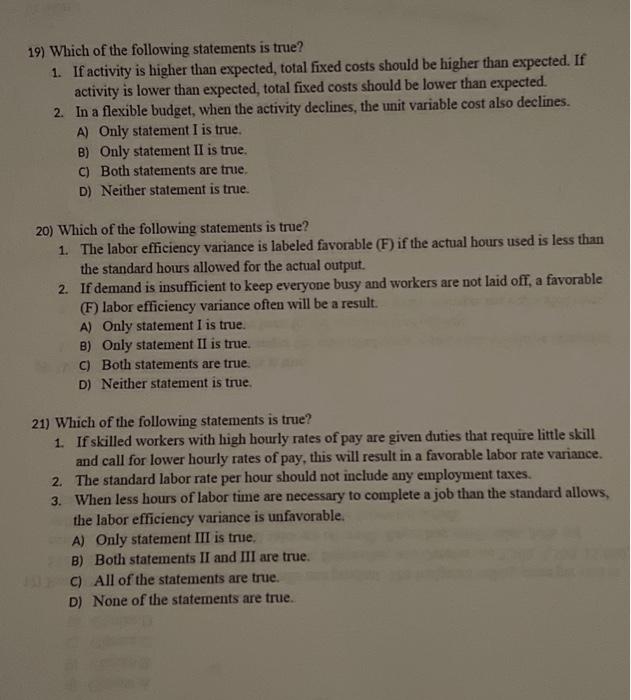Answered step by step
Verified Expert Solution
Question
1 Approved Answer
A.) Which of the following statements is true? 1. If activity is higher than expected, total fixed costs should be higher than expected. If activity
A.) Which of the following statements is true? 1. If activity is higher than expected, total fixed costs should be higher than expected. If activity is lower than expected, total fixed costs should be lower than expected.
2. In a flexible budget, when the activity declines, the unit variable cost also declines. A) Only statement I is true. B) Only statement II is true. C) Both statements are true. D) Neither statement is true.
B.) Which of the following statements is true? 1. The labor efficiency variance is labeled favorable (F) if the actual hours used is less than the standard hours allowed for the actual output.
2. If demand is insufficient to keep everyone busy and workers are not laid off, a favorable (F) labor efficiency variance often will be a result.
A) Only statement I is true. B) Only statement II is true. C) Both statements are true. D) Neither statement is true.
C.)Which of the following statements is true? 1. If skilled workers with high hourly rates of pay are given duties that require little skill and call for lower hourly rates of pay, this will result in a favorable labor rate variance. 2. The standard labor rate per hour should not include any employment taxes. 3. When less hours of labor time are necessary to complete a job than the standard allows, the labor efficiency variance is unfavorable.
A) Only statement III is true. B) Both statements II and III are true. C) All of the statements are true. D) None of the statements are true.

Step by Step Solution
There are 3 Steps involved in it
Step: 1

Get Instant Access to Expert-Tailored Solutions
See step-by-step solutions with expert insights and AI powered tools for academic success
Step: 2

Step: 3

Ace Your Homework with AI
Get the answers you need in no time with our AI-driven, step-by-step assistance
Get Started


